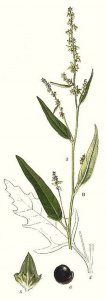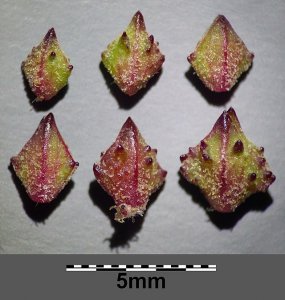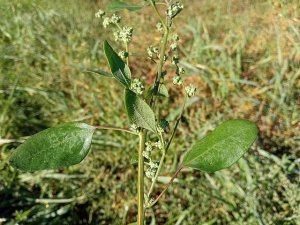Introduction to Common Orach
Atriplex patula, known as common orach, is a succulent-like plant that is native to Europe and was introduced to North America in the mid to late 1800s. However, this fact is often debated among botanists and other plant historians alike about the origins of common orach, but most evidence points to the plant originally growing in European habitats. This plant can be found in the upper Eastern states of the United States, including New Hampshire, Vermont, Maine, and Massachusetts. However, common orach is not limited to these locations, as the plant can be most often found in areas that have salty soil.
Other names that common orach are referred to as include saltbush, spearscale orache, orache, sea myrtle, and groundsel tree. Common orach is known as a terrestrial halophyte, so the plant is most prone to grow in marshes with salty water and soil, as the plant is quite salt tolerant.

Description of Common Orach
Common orach is a part of the Chenopodiaceae subfamily, which is a part of the Amaranthaceae family. The amaranth family contains over 2,000 species. The subfamily, Chenopodiaceae, is comprised of four tribes and 26 genera, including common orach. Plants in this family, such as common orach, typically have leaves that alternate and are flat, and plants that are often monoecious, so they can be either male or female. From here, the common orach is a part of the Atriplex genus that includes 300 other species.
Male common orach will often produce three to five lobes found within the flower, and each lobe will grow three to five stamens. Female common orach lacks the lobes of a male flower but typically have two enclosed flowers that are wrapped in the leaves, in which you will find a receptive tip in the center. The encased leaves on the female plant also host the fruit, or seeds, which are triangular in shape and flat, with a hardened shell. The plants reach an average of two feet, growing from a single stout root, with flowers reaching an average of one to two inches in length and a spike formation.

Uses for Common Orach
The most common use of common orach is as a wild food source. Foragers have reported using common orach in both its young and mature states, in salads, or as a substitute for dark leafy greens, such as spinach. Most benefits related to common orach are related to agriculture. However, when searching for the benefits of this plant, you will find that the names “saltbush”, “old man saltbush”, and “goosefoot” are more commonly used. Common orach is a good choice of feed for livestock, as saltbush can be grazed until the plants reach five to ten percent foliage left. Studies have also found that livestock that grazes on saltbush has a higher vitamin E count in their meat.

Medicinally, orach leaves are noted to help purge the body of toxins, act as a stimulant for metabolism, and help relieve fatigue. However, common orach and other orach varieties are less commonly used herbs in herbal medicine. The leaves can be eaten raw or cooked, and the seeds can be harvested and cooked to be ground up into a meal used in soups and stews. Do keep in mind, though, that the seeds contain saponins, which are components in the plant that make the seeds have a bitter taste. However, another use of the seeds is to produce dye from them, as the seeds will produce a shade of blue when brewed.
Cautions
One disclaimer of consuming common orach is the potential of developing sensitivity to light, yet this often only happens when common orach is consumed in large quantities. So, if you are already prone to light sensitivity, or have been prone in the past, test the plant in small quantities before using. The saponins mentioned earlier that are found in the seeds can also be toxic, yet saponins are poorly absorbed when consumed.
—————Written by Jordyn Lee
Jordyn Lee is a freelance writer with a background in herbalism and a passion for sustainable living. She has a Bachelor's degree in Communication Studies and continues to learn more about health and nature. Connect with her on (LinkedIn) or Freelancer Profile (upwork.com).
Many of our readers find that subscribing to Eat The Planet is the best way to make sure they don't miss any of our valuable information about wild edibles.
See our privacy policy for more information about ads on this site






